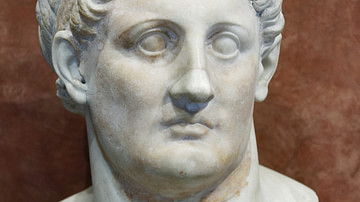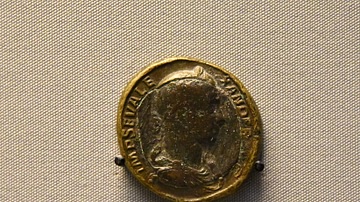Search
Search Results

Image
Map of the Cities Named Alexandria by Alexander the Great
This map illustrates the network of cities founded, renamed, or reorganized by Alexander The Great (Alexander III of Macedon, reigned 336–323 BCE) during his campaigns across the Near East, Central Asia, and the Indian subcontinent. As part...

Definition
Seleucus I Nicator
Seleucus I Nicator (l. c. 358-281 BCE, r. 305-281 BCE) was one of the generals of Alexander the Great (l. 356-323 BCE) who made up the group of Diadochi ("successors") who divided the vast Macedonian Empire between them after the death of...

Definition
Ptolemy I
Ptolemy I Soter (366-282 BCE) was one of the successor kings to the empire of Alexander the Great. He served not only as king of Egypt but also the founder of the Ptolemaic Dynasty, a dynasty which included the infamous Cleopatra VII. Early...

Definition
Cynane
Cynane (l. c. 357- 323 BCE, pronounced `Keenahnay') was the daughter of the Illyrian Princess Audata and King Philip II of Macedon, making her the half-sister of Alexander the Great (l.356-323 BCE). Following the Illyrian tradition of women...

Image
Bimetallic Medallion of Emperor Severus Alexander
Medallions with designs similar to coins could be worn as a symbol of allegiance, or given as prestigious gifts. They were specifically intended to be attractive, as display or presentation pieces. Bimetallic medallion of the Roman Emperor...

Image
Alexander Sarcophagus (detail)
The Alexander Sarcophagus is a late 4th century BCE stone sarcophagus adorned with bas-relief carvings of Alexander the Great. The Alexander Sarcophagus is one of four massive carved sarcophagi, forming two pairs, that were discovered during...

Definition
Bucephalus
Bucephalus was Alexander the Great's horse and is considered by some to be the most famous horse in history. Alexander and Bucephalus' initial meeting was unique but demonstrated the true character of one of the greatest generals in all of...

Image
Alexander the Great
Marble head of Alexander the Great, found in the Kerameikos in Athens, c. 300 BCE. Alexander wears the lion’s pelt, a common iconographic feature in depictions of the young king on coins, which hints at his descent from the mythical hero...

Image
Colossal Statues of Philip II and Alexander III in Skopje
Colossal statues of Philip II of Macedon (r. 359-336 BCE) and Alexander the Great (r. 336-323 BCE) in Skopje. The Skopje 2014 (2010-2014) was a project involving the construction of 136 monumental buildings, bridges, statues, and fountains...

Image
Wall Block Inscribed with the Name of Alexander the Great
Marble wall block from the temple of Athena Polias at Priene, inscribed with the name of Alexander the Great, c. 334-330 BCE. The British Museum, London. Around 340 BCE, the inhabitants of Priene were laying out their new city, terraced...